
Stanisław Ignacy Witkiewicz, commonly known as Witkacy, was a Polish writer, painter, philosopher, theorist, playwright, novelist, and photographer active before World War I and during the interwar period.

Mikalojus Konstantinas Čiurlionis was a Lithuanian composer, painter, choirmaster, cultural figure, and writer in Polish.

Franciszek Smuglewicz was a Polish-Lithuanian draughtsman and painter. Smuglewicz is considered a progenitor of Lithuanian art in the modern era. He was precursor of historicism in Polish painting. He was also a founder of Vilnius school of art, his most prominent students were Jan Rustem, Jan Krzysztof Damel, Gaspar Borowski and Józef Oleszkiewicz. His father Łukasz Smuglewicz and brother Antoni were also painters.

Michał Pius Römer was a Polish-Lithuanian lawyer, scientist and politician.
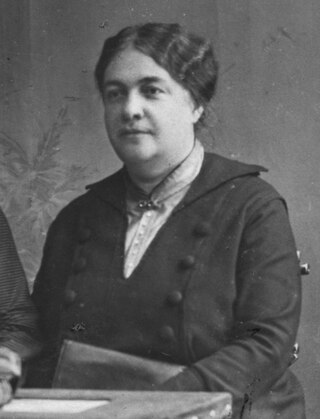
Joanna Narutowicz née Billewicz was a Polish-Lithuanian educational activist and the last owner of the Brėvikiai Manor (Lithuania). Born to the Billewicz family, she was a cousin to Poland's first chief of state Józef Piłsudski and General Leon Billewicz. She married Stanisław Narutowicz, a signatory of the Act of Independence of Lithuania, with whom she ran several cultural facilities. Notably, she headed the gymnasium for girls in Telšiai. She was also the chairperson of the last Polish gymnasium in Kaunas, Lithuania. She left Lithuanian SSR after World War II and settled in Warsaw. She died there and was buried at Powązki Cemetery.

Marija Lastauskienėnée Ivanauskaitė and her sister Sofija Pšibiliauskienė were Lithuanian sisters who wrote under the shared pen name Lazdynų Pelėda. Marija married Belarusian literary critic and politician Vaclau Lastouski (Lastauskas), but divorced after a few years.
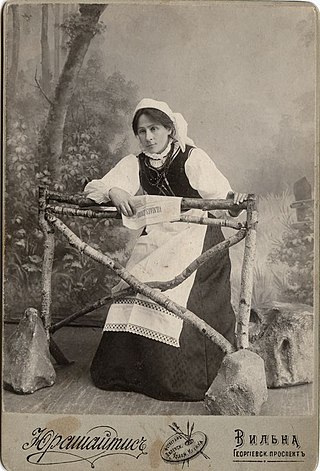
Sofija Pšibiliauskienėnée Ivanauskaitė and Marija Lastauskienė were two Lithuanian sister writers of Polish origin, using the same pen name Lazdynų Pelėda.

Zofia Stryjeńska was a Polish painter, graphic designer, illustrator, stage designer, and a representative of art deco. Along with Olga Boznańska and Tamara de Lempicka, she was one of the best-known Polish women artists of the interwar period. In the 1930s she was nominated for the prestigious Golden Laurel of the Polish Academy of Literature, but declined the offer.
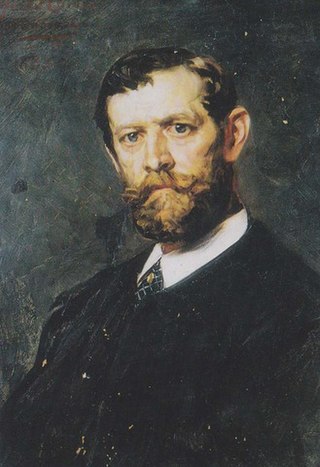
Alfred Izydor Romer was a Polish-Lithuanian painter, sculptor, printmaker and medallist from the family of Baltic-German origins, who worked in what is now Lithuania and Belarus.

Tadeusz Gorecki was a Polish-Lithuanian genre and portrait painter.
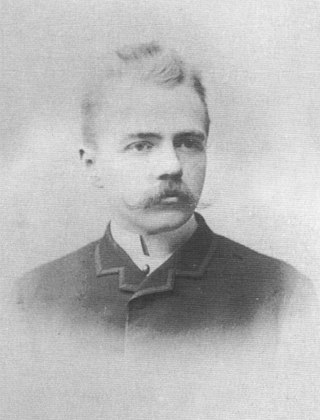
Tadeusz Maria Rostworowski (1860-1928) was a Polish architect and painter.
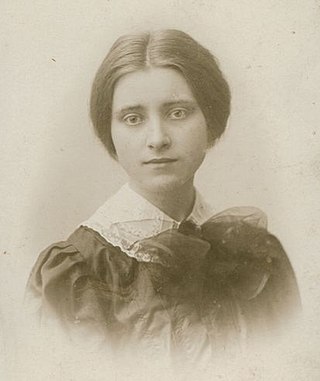
Sofija Čiurlionienė née Kymantaitė was a Lithuanian writer, educator, and activist.

The Lithuanian Art Society was a society that organized Lithuanian art exhibitions and supported Lithuanian artists. Based in Vilnius, it was active from 1907 to the outbreak of World War I in 1914. It was chaired by painter Antanas Žmuidzinavičius. The society was established after the first Lithuanian art exhibition was successfully organized in early 1907. The society continued to organize annual exhibitions that displayed works both by professional and folk artists. Influenced by the Arts and Crafts movement, the society paid great attention to Lithuanian folk art which was increasingly seen as an expression of the Lithuanian character. In 1912, the society published an album of drawings of Lithuanian crosses, column shrines, and roofed poles, which is considered the first study of Lithuanian folk art. The society was also instrumental in preserving the art of Mikalojus Konstantinas Čiurlionis and organized his first solo exhibitions in 1911 and 1913. The society also collected works by other artists and worked with the Lithuanian Scientific Society to establish a Lithuanian art museum. The collection was transferred to the present-day M. K. Čiurlionis National Art Museum in 1920.

Stanisław Horno-Popławski (1902-1997) was a Russian-Polish painter, sculptor and pedagogue.
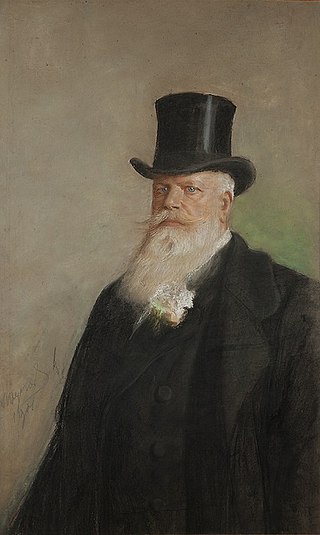
Ignacy Karol Korwin-Milewski was a Polish-Lithuanian art collector, political writer and traveler.
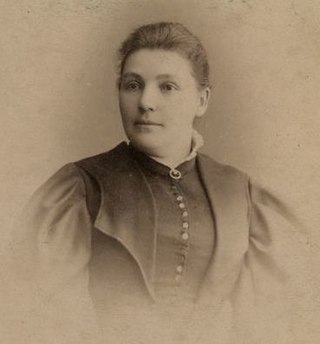
Sofija Zubovienė née Bilevičiūtė was a Lithuanian noblewoman. Together with her husband count Vladimir Zubov, she established and maintained six primary schools for children of manor workers and peasants in their estates near Šiauliai.
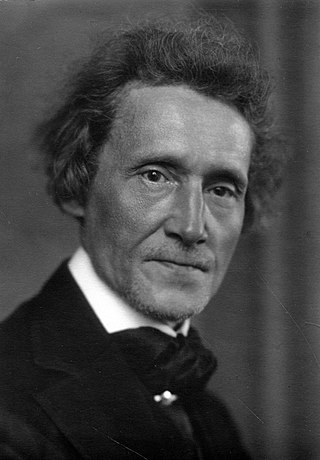
Juozapas Albinas Herbačiauskas or Józef Albin Herbaczewski was a Polish-Lithuanian occult writer, poet, literary critic, playwright, publicist and translator. Described as modernist and expressionist in style, Herbačiauskas was one of the pioneers of the essay in Lithuanian literature.

















